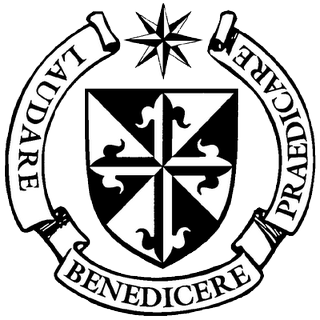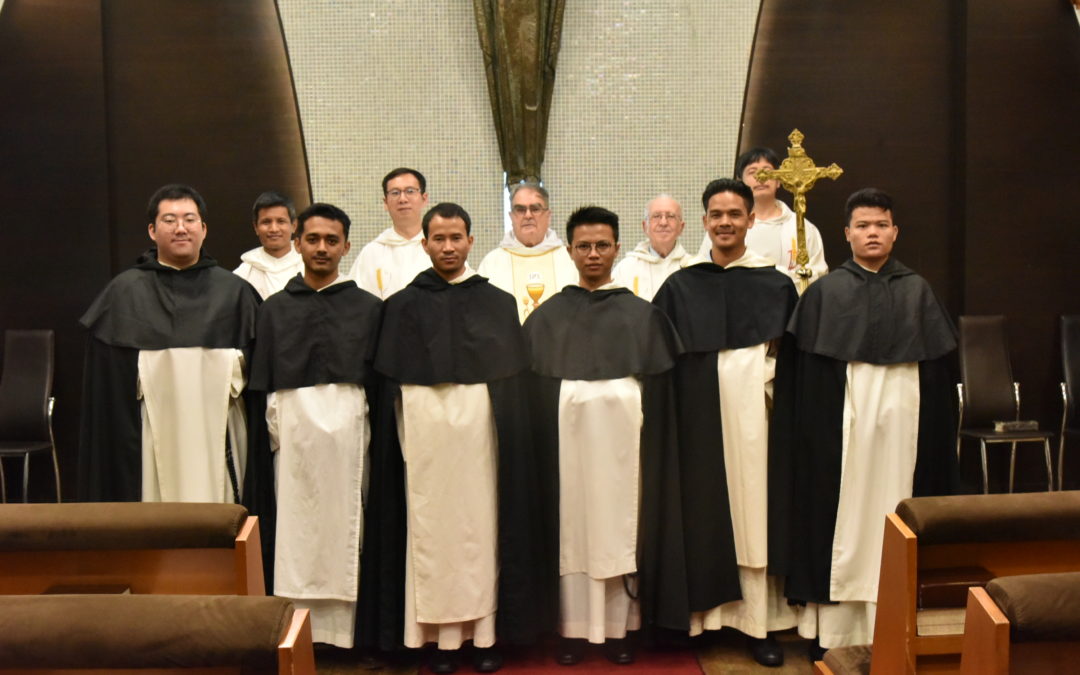
A yearly recurrent ephemerides at this community of St Dominic’s Priory in Macau is the religious profession renewal of some of the student brothers. This year the event took place on 21 June. On that day, seventeen brothers, wearing their black and white Dominican habit, renewed their promise of obedience to God, to Blessed Mary, to Blessed Dominic and, through the local superior, to Fr Gerard Francisco Timoner, the current Master of the Order of Preachers. They likewise pledged fidelity “to go to the foreign Mission whereever assigned by their superiors” as it is customary in the Province of Our Lady of the Rosary. It was one step forward for them towards their solemn profession.
By circumstance, this year the 17 brothers found themselves in different countries on that very day of 21 June: Bro. Innocent Han-Zaw-Htun was in Yangon; Bro. Reynaldo Chang, in Hong Kong, Bro. Benedito de Jesus, Cesar Lino de Sousa, Agostinho Mendonça, Andre Pereira, Joao Baptista Pereira, Gaspar de Jesus, Agostinho Maia dos Santos, Natalino da Costa, in Timor Leste; Bro. Mark Noh Seung, in Korea; and the rest, Bro. Gabriel Khun Ri, Luigi Yu Reh, Aloysius Thurein-Htun, Francisco Zin Ko Lin, Francis Kim Eung Woo and Joseph Hung Naing Ling remained in Macau. In this way, the joyful event was witnessed by a larger number of brothers, some of them young aspirants and novices, in the Missions of the Province. As seen in the pictures they shared with us after the event, their faces reflected joy.
In Macau, at St Dominic’s Priory, the ceremony of the renewal took place in the evening of that day during the Vespers and the conventual Mass, presided over by the Prior of the community, Fr Javier Gonzales, and concelebrated by Frs. Fausto, Edmond Eh, Paul Fan and Lawrence Reh, and participated by the rest of the student brothers. The celebration ended with the singing of the Salve Regina and the O Spem Miram to our Father Dominic.
Our warmest congratulations to all the brothers for this act of generosity towards God. Congratulations also to our Korean Brother Mannes John Kim Su-Myeong, a former student in Macau, who on this same date made his solemn profession in his home country, South Korea. Our prayers for all of them, with the wish that the Lord who started this good work may take it to fulfillment.
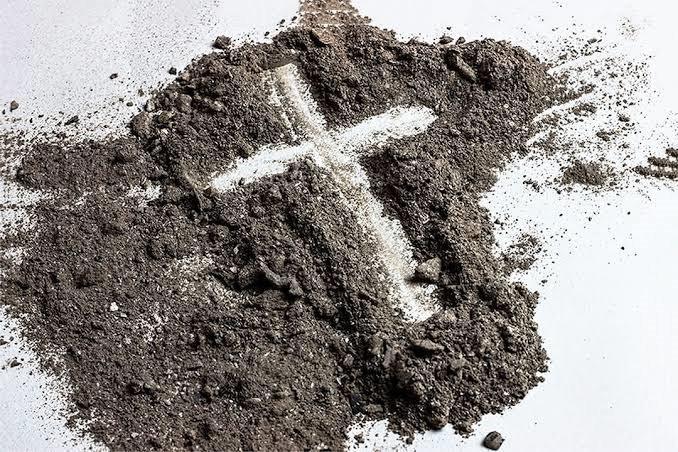
This year 2022, the Ash Wednesday, which in the liturgical calendar marks the beginning of our Lenten journey towards Easter, was a Day of Prayer and Fasting for Peace in Ukraine, as requested by Pope Francis.
Here at St Dominic’s in Macau, the community Mass was presided over by its Prior, Fr Javier Gonzalez, during which the ashes were imposed on all its members with the customary words “Repent and believe the Gospel.” The Mass readings of that day highlighted the Lenten itinerary in expressions such as “Return to the Lord…” (prophet Joel), “Be reconciled to God” (St Paul), “When you pray…When you give alms… When you fast…” (Jesus). Our response both as individuals and as a community could not be other than “Be merciful, O Lord, for we have sinned” (Resp. Psalm). We continue praying for our personal conversion and for peace in the world.
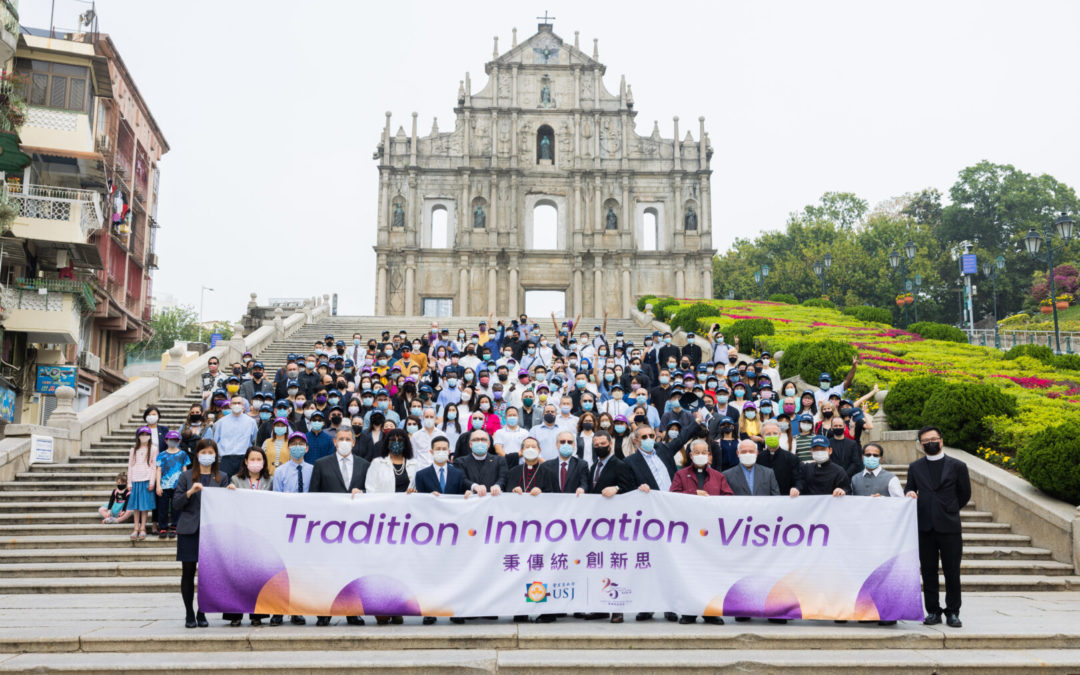
On Friday, 18 March 2022, the University of Saint Joseph in Macau celebrated its 25th Year Anniversary with a Mass in the Cathedral of the Nativity of Our Lady, presided over by the diocesan Bishop, D. Stephen Lee. The Rector of the University, Rev. Deacon Stephen Morgan, assisted the main celebrant as Deacon. Likewise, our Dominican community was actively involved in the liturgical celebration: some priests-professors concelebrated with the bishop, and our student brothers assisting also during the Mass, some as acolytes and the rest in the music ministry as members of the choir. Other members of the assembly participated in different ways, from proclaiming the readings to presenting the intercessory prayers on behalf of the entire community. USJ administrators, professors, staff members, alumni and students alike were also present.
It was a Thanksgiving Mass to commemorate the important landmark of the USJ Silver Anniversary of the USJ, which under the motto “Tradition, Innovation, Vision” continues committed to play a significant role in the evangelization in this part of the world. Bishop Lee, during his homily, highlighted the meaning and relevance of the event. As it coincided with the festivity of St Joseph, the bishop cited the Holy Father’s Pastoral Letter Patris corde (“With the heart of a father”) and encouraged everyone to imitate the fatherly virtues of the Holy Patriarch Saint Joseph. He ended by giving thanks to the Lord for the growth and development of USJ in the past 25 years and requested the academic community present, students and teachers alike, to ask for grace for the next 25 years.
After the Mass, invited guests and participants took a group photo at the nearby Ruins of Saint Paul’s, a place where Catholic Higher Education began in East Asia and a reminder of how the University is rooted in a long tradition of intercultural exchange that has been the hallmark of Catholic higher education in Macau since the College of Saint Paul, founded in 1954.
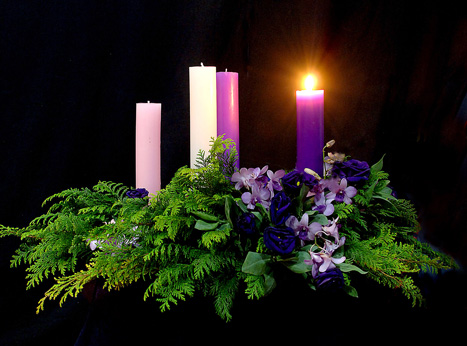
What is Advent?
The word Advent is derived from the Latin word advenire, meaning ‘to come’, referring to the coming of Christ.
In the Catholic Church, Advent refers to the four weeks preceding Christmas, a time of liturgical celebration that highlights the birth of Jesus Christ and, according to biblical prophecy, the Day of Judgment on which he returns.
Advent is a time of spiritual purification, as well as preparing for Jesus’ arrival. Purple is the color used in the vestments during celebrations, a symbol of the beginning of a new liturgical year, which occurs on the first Sunday of Advent.
Advent is a time for penance and spiritual cleansing, but for Christians, it is also a time of joy and rejoicing. This is because it nurtures the hope of the Messiah’s return through the celebration of his birth.
Advent represents Mary’s waiting for the birth of Jesus. This is announced by the Angel Gabriel in a vision in which he told her she was about to conceive the Son of God.
Advent always begins on the Sunday closest to the 30th of November and ends on the 24th of December, Christmas Eve.
The wreaths of candles has symbolic meanings tied to the Christmas season, and each of them has the meaning that the circle of wreath signifies the eternity of God with no beginning or end. And even each of the individual evergreen that makes up the wreath has the meaning that can be represented to our faith. We don’t mention each of them but the most important is that the wreath as a whole is meant to remind us of both immortality of our soul and God’s promises of everlasting life through our Lord Jesus Christ.
The four candles represent four weeks of Advent, and each candle represents each Sunday. Three candles are purple, the liturgical calendar color that represents the time of prayer, penance, and sacrifice.
The first purple candle symbolizes hope, Sometimes it is called the “Prophecy Candle” in memory of the prophets, especially Isaiah, who prophesied the birth of Christ. It symbolizes the expectation for the coming Messiah.
The second purple candle symbolizes faith. The candle is called the “Bethlehem Candle” as it symbolizes Mary and Joseph’s journey to Bethlehem.
The third candle is pink and symbolizes joy. It is the “Shepherd’s Candle”, and it is pink because rose is the liturgical color for joy. The third Sunday of Advent is Gaudete Sunday and is meant to remind us of the joy that the world experienced at the birth of Jesus, as well as the joy that the faithful have reached the midpoint of Advent.
The four and last purple candle, lighted on the four Sunday of Advent, symbolizes peace. It is the “Angel Candle,” as the angel’s message reminds us “Peace on earth, to the people of goodwill” (Luke 2:14 KJV). It is the final week of prayer, penance as we wait for the arrival of our Saviour.
In modern traditions, the Advent wreath we see does not include a white candle. But the white candle is in place in the middle of the wreath and on Christmas Eve. This candle is named “Christ candle” and it represents the life of Christ. The color white symbolizes purity because Christ is our sinless, pure Saviour.
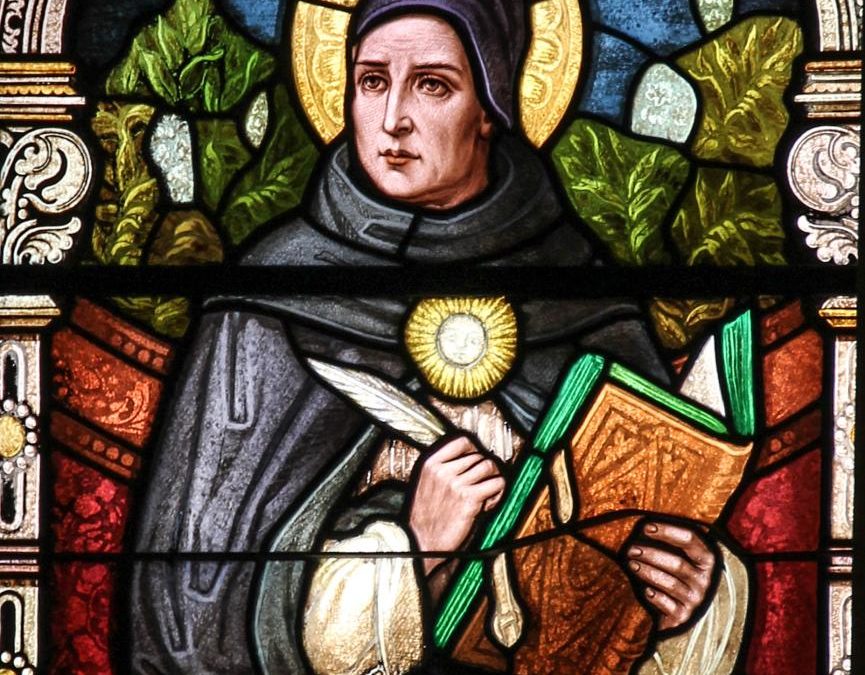
We all want good things. When we encounter something good, whether it be the type of food, or car, or smartphone, our first question is often: where can I get that?
Virtue is a good thing. A virtuous person possesses an undeniable appeal. A virtuous person can inspire us to pursue virtue ourselves, but this is where things become somewhat complex. Unlike food, a car, or a smartphone, the virtues are not external, material things that I can obtain and then place in my refrigerator, my garage, or my pocket. Virtues are things that inhere inside a person. Human persons do not have virtues so much as they are virtuous. And this is good news, although multiple persons cannot all have an individual smartphone at the same time and to the same degree, everyone has the potential to be truly virtuous and enjoy the happy freedom that virtue provides. But where do we get virtue? Where does virtue come from? What makes a person virtuous? Let us look at the causes of the virtues.
We recall that the virtues perfect the human person, and in that person’s actions good. A virtue is a kind of habit that is a stable disposition that profoundly qualifies (deeply ) that human powers of knowing, willing, and feeling.
A virtuous person performs good actions because he or she is a good person. The type of actions one performs is linked to the type of person one is. We also recall that there are two broad categories of virtue: there are, first of all, moral virtues or human virtues. These virtues perfect the human power of knowing, being willing, and feeling in a human way and on a human level. The most famous example of the virtuous is the habits of prudence, justice fortitude, and temperance.
These pivotal ( or cardinal ) virtues perfect the natural powers of knowing, being willing, and feeling in a way proportioned to natural human freedom and flourishing.
The second broad category of virtue is the theological or God’s virtues. These virtues perfect and extend the human powers of knowing and willing beyond the human person to God himself. These operate on a supernatural level. There are three theological virtues: faith, hope, and charity. Let us now turn to the causes of these two types of virtues. A natural cause of moral ( or human ) virtues is the performance of good actions. For example, take a man who interacts with others. Such a man encounters residential neighbors and works with colleagues on a regular basis. As a human being, this man of course has a will; and thus, he has the potential to exercise his will justly in his dealings with others. If he acts justly if he gives to others that which they are owed, that which is their due, he eventually becomes a just man. The man who acts justly with regularity eventually acquires the habit of justice in his will. Why? Because through the deliberate and repeated acts of justice he becomes accustomed. He becomes habituated to the form of justice. His will itself takes on the just shape of his just actions. He becomes what he does. And because his actions are just, he becomes a just person. Similarly, the man who acts temperately, the man who allows reason to guide his enjoyment of physical pleasure like food and drink eventually becomes a temperate man.
He is a man who desires to take on the virtuous shape, the liberating habit of temperance. Through deliberate and repeated eating healthy proportions ( pursuing the good and virtuous means between excess ( too much ) and defect (too little) the man becomes a temperate man.
In summary, the natural cause of moral virtue is the performance of good actions. Moral virtues can be acquired through virtuous activity. The more good that we do, the more virtuous we become. And the more virtuous we become, the more promptly, joyfully, and easily do we perform good actions, We become what we do.
There is another type of virtue that no human action can still in the soul of the person. And these are the infused virtues, the virtues that direct and unite us to God. God is the principal cause of the infused virtues. In the case of acquired virtues, repeated, good actions eventually yield a virtuous habit in the powers of the human soul. In this case of infused virtues, however, this order is reversed. God first imparts, He first infuses, supernatural virtue into the soul, and then the person is able to act according to these theological virtues.
Why do we need infused supernatural virtues? As discussed earlier, the acquired moral virtues are habits that are good in relation to human goodness. The moral virtues are good insofar as they perfect nature on a natural level. In contrast, the infused virtues are supernatural good. They are with goodness beyond the proportion of human goodness. God is the measure of supernatural goodness. And because the intimate life of God is beyond the natural reach of the human powers of knowing and willing, only God can cause the theological virtues in the power of the human soul. Take the infused (theological) virtue as faith, for example; no repeated acts of rigorous thought or even sympathetic judgment can engender or cause the supernatural virtue of faith in the human intellect. We do not come to faith in God after or because we have to judge what he says to be true. Rather, God first imparts the theological virtue of faith in the soul, and it is by this supernatural habit that we are enabled to make acts of faith.
The theological virtue of faith unites the human intellect to God. Through faith, we believe that what God reveals is true because it is God who reveals it. Our mind must first be raised to God in order for us to believe something because of God. This is what the infused virtue does.
In sum, the virtues perfect a human person, making both the person and the person actions good. But there are two kinds of goodness: There is natural (moral) goodness and there is supernatural (theological) goodness. We acquire moral virtues through repeated actions. In this way, good actions are the cause of moral virtue in the human powers of knowing, willing, and feeling.
With regard to supernatural goodness, the goodness of God, however, no human action can produce theologically proportioned virtues. Only God can cause, only God infuses his virtues: faith, hope, and charity. Therefore, repeated and deliberate good actions can cause moral virtue. But only God can cause the infused virtues in the soul of the human person.
Summa Theologiae I-II, q. 51, a,1-3
https://aquinas101.thomisticinstitute.org

Easter is one of the most important festivities for Christianity, as it brings us to the crucifixion and resurrection of Jesus Christ. This is a moment that invites us to reflect on the victory of life over death, the victory of love over hatred. And also about our role in building a more just and fraternal society.
May this period be filled with renewal, love of neighbor, and reflection on our thoughts and actions. May we strengthen our mission and learn more and more, from each other, and be inspired by the Word of God.
May it also be an opportunity for freedom from suffering and confidence in love. Both in the love that God has for us, and in the love that we can dedicate to those around us and, mainly, to those who need it most. Whether they are in our communities or in places that are experiencing serious conflicts and appear on the news.
May the joy of the risen Jesus Christ comfort all hearts, those who are close to us and also those who are distant, needing hope to face difficulties.

